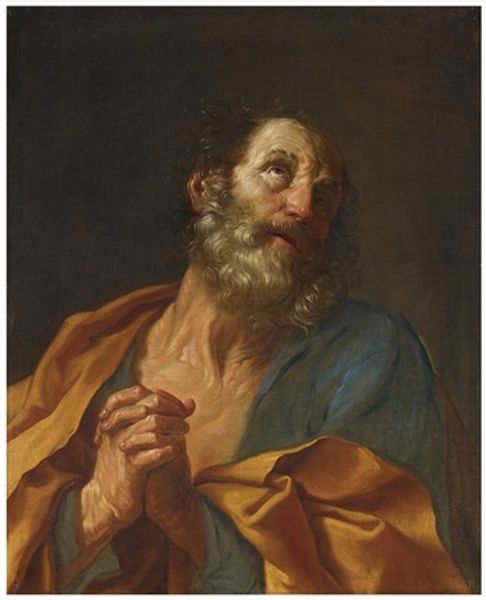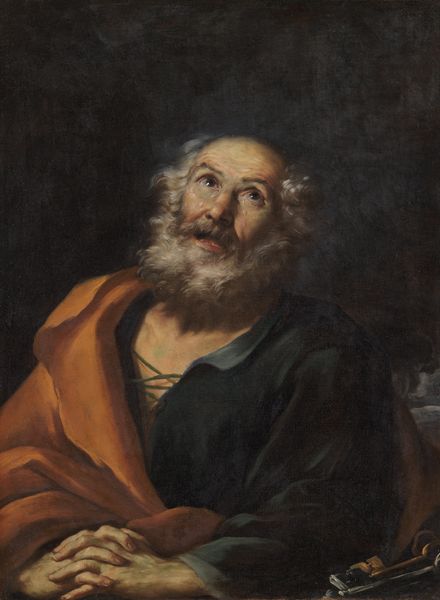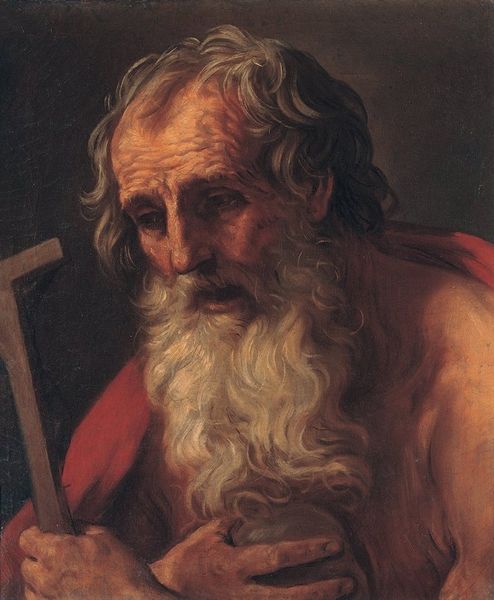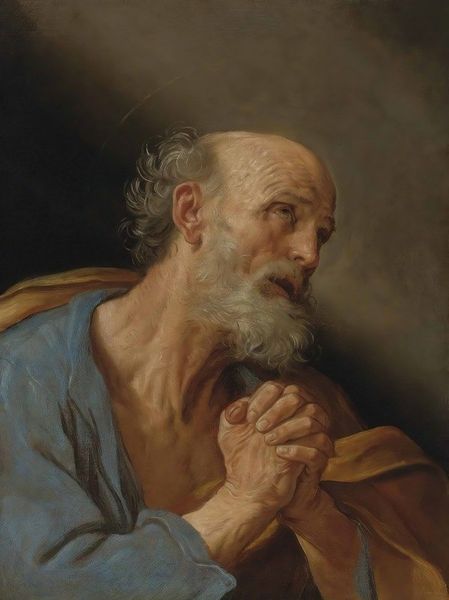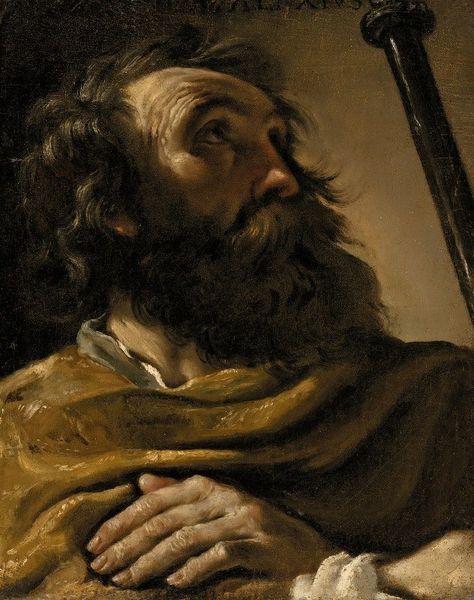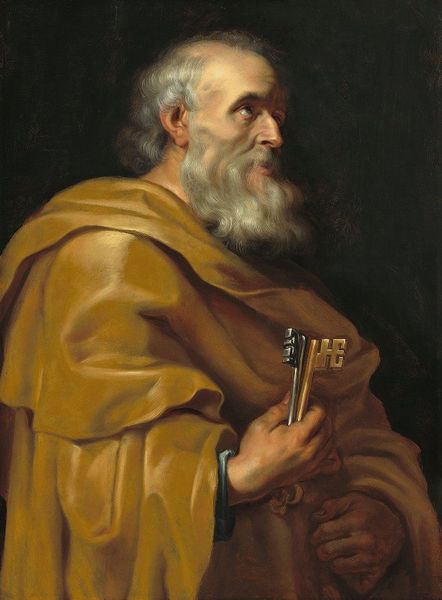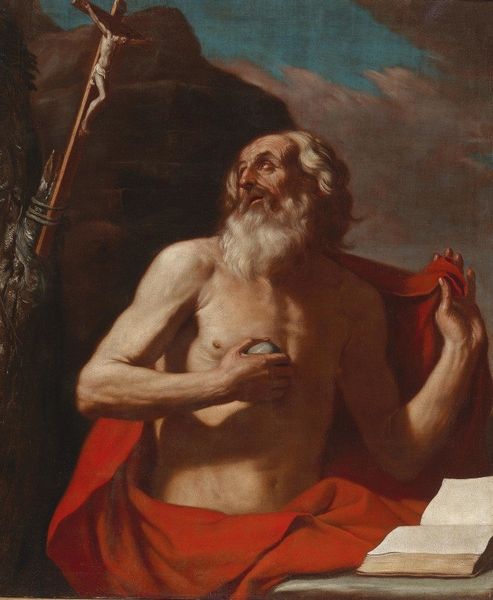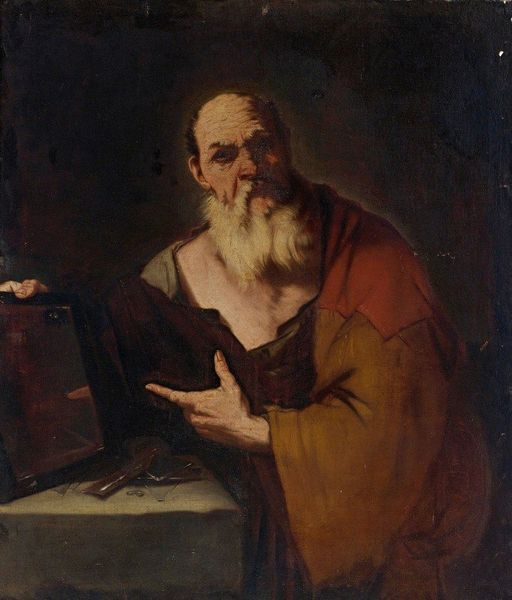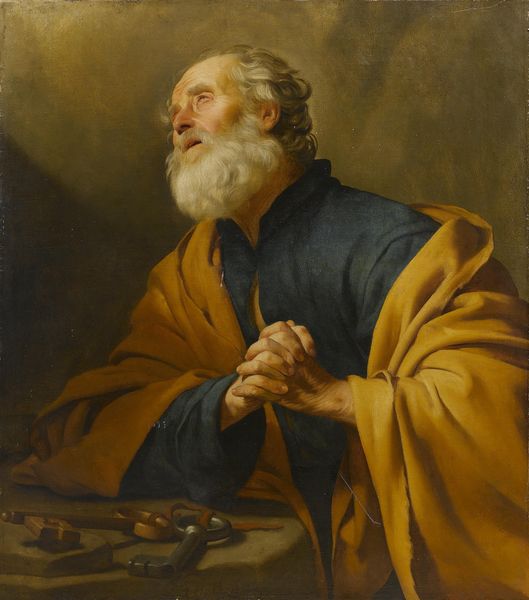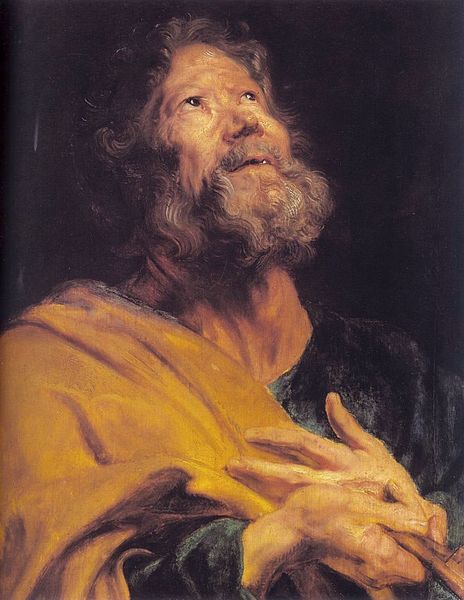
painting, oil-paint
#
portrait
#
baroque
#
portrait
#
painting
#
oil-paint
#
history-painting
Copyright: Public Domain: Artvee
Curator: What strikes you most about this oil painting of Saint Peter? Guercino has rendered him with such intense feeling. Editor: The raw, almost earthy texture of the paint is immediately what grabs my attention. See how the pigment's built up in layers, particularly on his face and hair? It feels… visceral. Curator: Absolutely. The application of paint is vital, a Baroque hallmark intended to evoke dramatic emotion in the viewer. Peter’s traditionally holding the keys, which symbolize his role as the gatekeeper of heaven and founder of the Church. How might this inform the material presence, as you call it? Editor: I see those keys as evidence of human labor. The raw materials, iron or bronze, shaped and molded through a laborious process—representative of the very real power structures being established at that time. It’s no accident that Guercino emphasizes their weight and physicality in the composition. Curator: Indeed. There is a potent blend of spiritual aspiration and worldly authority inherent here. The Catholic Church wielded immense influence, shaping artistic production itself through patronage and theological dictates. Editor: And let’s not forget, those pigments themselves weren't easily acquired. The blues would be precious ultramarine, ground from lapis lazuli… this painting would have represented a considerable investment, and a concentration of many skills and resources. Curator: Good point. That lapis lazuli, coming from remote mines and ground to an even consistency by a workshop... Saint Peter wasn't just any figure—his depiction here reinforces the papacy's claim to apostolic succession, legitimized by art. Editor: To think of all the hands involved, from mining the raw materials, refining it, and crafting it, it creates a fascinating narrative about social conditions tied to artistic production during this period. The Church invested in their symbolic power, and by extension, perpetuated an economic system with complex social strata. Curator: Seeing the brushstrokes now as embodiments of class division gives new food for thought. Thank you. Editor: The materiality of even a "divine" image reminds us of earthly structures, labor, and the very real forces shaping our perception. It shifts my focus entirely.
Comments
No comments
Be the first to comment and join the conversation on the ultimate creative platform.
